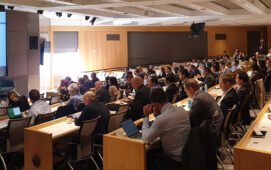
CUSIP Global Services has released a unique entity identifier for the $5 trillion syndicated corporate loan market. The CUSIP Entity Identifier (CEI) is a unique 10-character code assigned to each legal entity holding corporate loans and was developed in collaboration with the Loan Syndications and Trading Association (LSTA) and Versana.
The identifier provides transparency into underlying legal entities participating in the corporate loan asset class, including private credit. It will track legal entities’ digital notices, transactions and position level details propagated through the Versana platform, digitally connect the loan market across agents, lenders and service providers, and create straight-through-processing capabilities and unprecedented visibility into participants’ corporate loan holdings.
The CEI is open source and accessible on the CUSIP.com website. It is also available online, via a data feed or through an API. Syndicated loan market participants can request an identifier at CUSIP.com.
“By introducing a fully open and freely available taxonomy for identifying the legal entities connected to each loan product, we are bringing much needed flexibility that will help streamline and remove unknowns from the syndicated loan market,” says Scott Preiss, senior vice president and global head, at CUSIP Global Services.
The LSTA is a not-for-profit trade association committed to advancing the corporate loan market. Versana is an industry-backed data and technology company that captures agent banks’ data in real-time basis, provides transparency into corporate loan level details and portfolio positions, and brings efficiency and velocity to the market.
“By embracing this technological advance, the loan industry can use digital workflows to eliminate time consuming, manual reviews and cross checks in the trading and settlement process,” says Lee Shaiman, executive director of the LSTA. “To move the industry forward, we really needed to develop trusted, reliable reference data standards that can be used to take the guesswork out of key administrative and risk management functions.”
Cynthia Sachs, CEO of Versana, adds: “We launched Versana with one clear goal – to modernise the global corporate loan market – and we’re doing that by delivering foundational transparency, efficiency and velocity. The CEI is a game changer as it brings to market an open-source identifier to optimise system interoperability across the asset class.”
Subscribe to our newsletter





